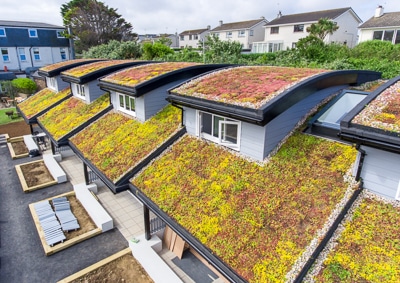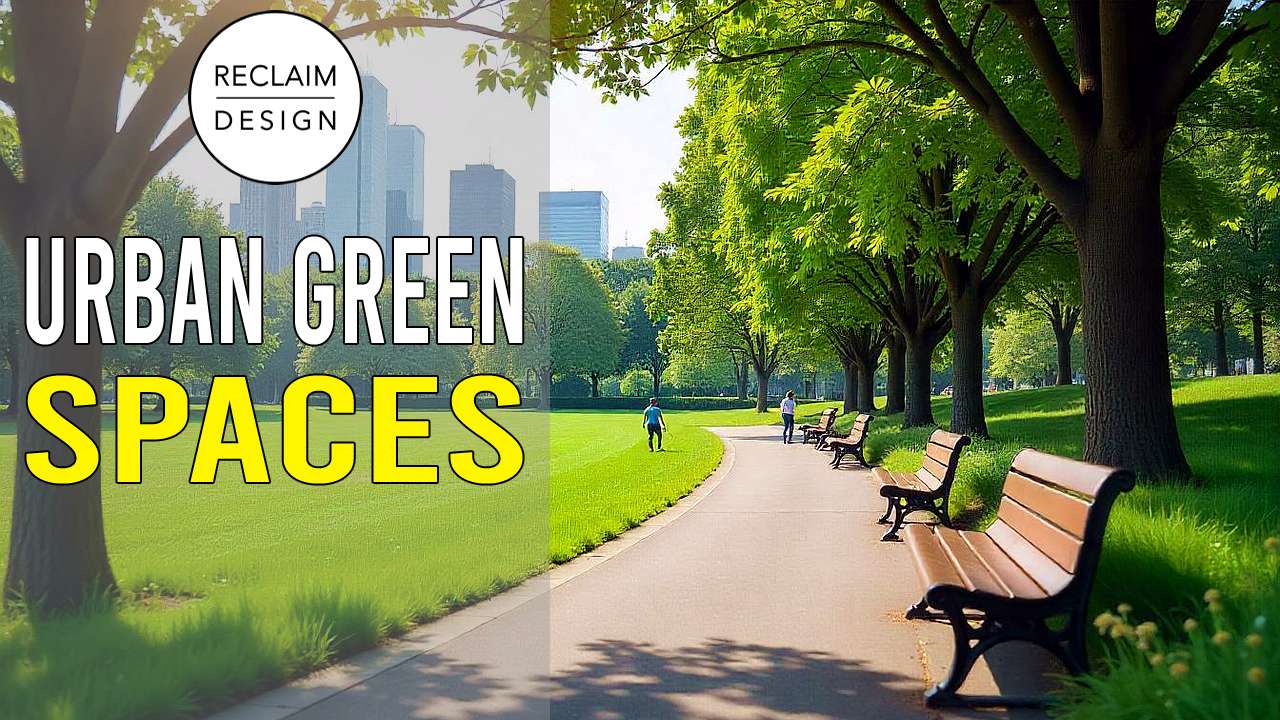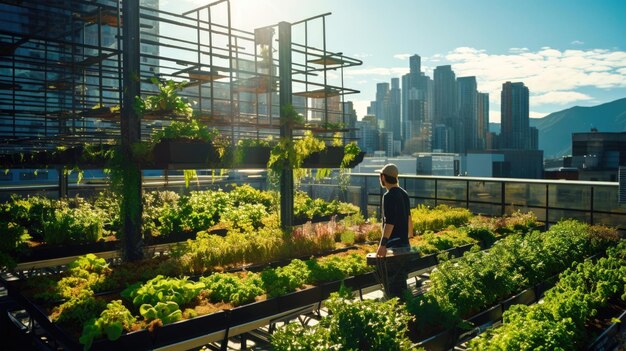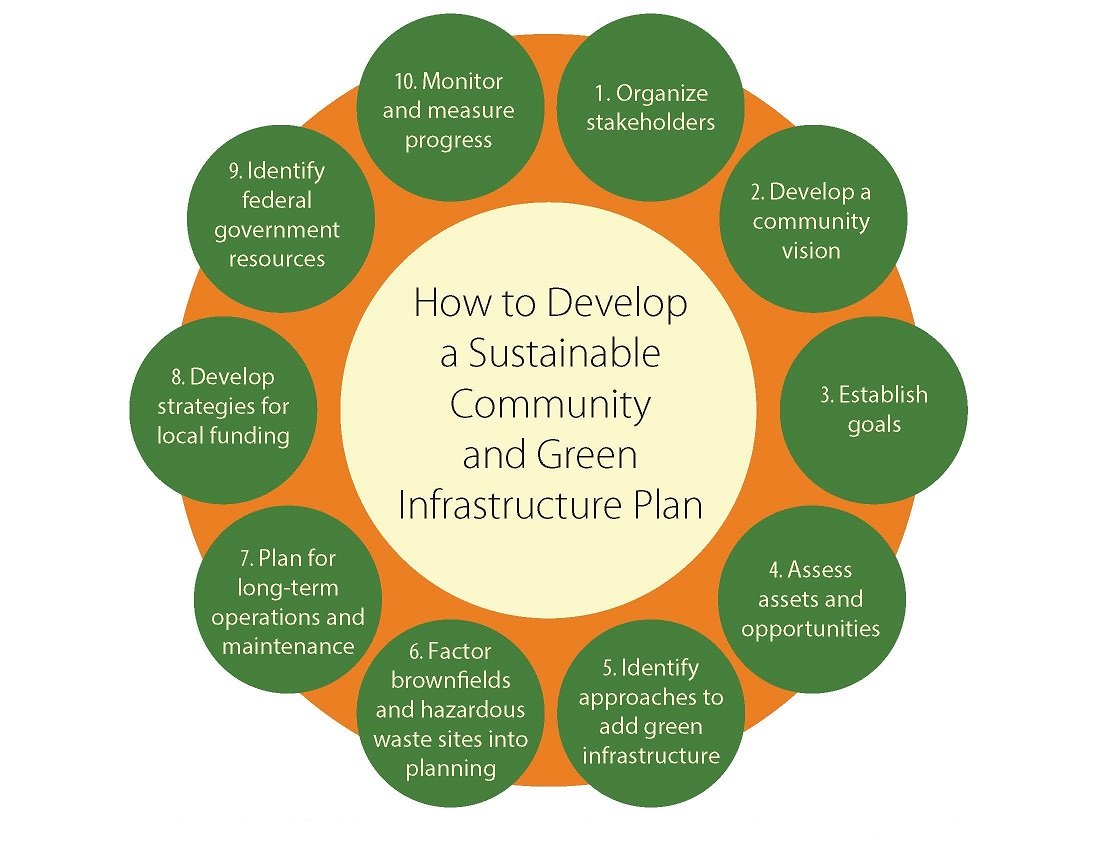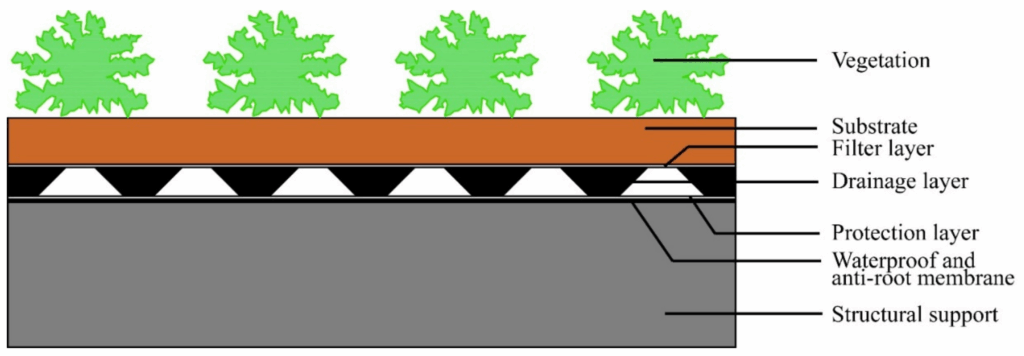
Blooming Above: The Definitive Guide to Sustainable Green Roof Design
Imagine a world where buildings breathe. Where rooftops, instead of being barren expanses of asphalt or concrete, are vibrant ecosystems teeming with life. This isn’t a futuristic fantasy; it’s the reality that sustainable green roof design is bringing to cities and communities worldwide. More than just a trendy architectural feature, green roofs are a powerful tool for environmental stewardship, offering a wealth of benefits for both the planet and the people who inhabit it. This comprehensive guide will delve into the fascinating world of green roofs, exploring their design, benefits, and the crucial role they play in creating a more sustainable future.
What Exactly is a Green Roof?
At its core, a green roof, also known as a vegetated roof or living roof, is a roof that is partially or completely covered with vegetation and a growing medium, planted over a waterproofing membrane. This simple definition belies the complexity and ingenuity of these systems. They are carefully engineered structures designed to support plant life while protecting the underlying building from the elements. They range from simple, low-maintenance systems to complex, multi-layered designs that mimic natural ecosystems.
Types of Green Roofs
Green roofs can be broadly categorized into two main types:
- Extensive Green Roofs: These are typically lightweight systems with shallow growing depths (usually less than 6 inches). They are designed to be low-maintenance and often feature drought-tolerant plants like sedum, succulents, and grasses. Extensive green roofs are ideal for retrofitting existing buildings and are often used on large, flat roofs.
- Intensive Green Roofs: These systems are more complex, with deeper growing depths and a wider variety of plant species, including shrubs, trees, and even small gardens. They require more maintenance, including irrigation and fertilization. Intensive green roofs can create usable outdoor spaces and offer a greater aesthetic appeal.
The Sustainable Advantages: Why Green Roofs Matter
The benefits of green roofs extend far beyond their visual appeal. They are a cornerstone of sustainable building practices, contributing to a healthier environment and a more resilient urban landscape. Here are some key advantages:
Environmental Benefits
- Reduced Stormwater Runoff: Green roofs act like giant sponges, absorbing rainwater and slowing down the rate at which it enters the drainage system. This helps to reduce flooding, erosion, and the pollution of waterways. They can retain a significant percentage of rainfall, reducing the burden on municipal infrastructure.
- Improved Air Quality: Plants absorb pollutants from the air, improving air quality and reducing the “urban heat island” effect. They also release oxygen, contributing to a healthier atmosphere. Green roofs can filter out particulate matter, improving the overall air quality in urban areas.
- Carbon Sequestration: Plants on green roofs absorb carbon dioxide (CO2) from the atmosphere, helping to mitigate climate change. They contribute to the overall carbon footprint reduction of a building and can store carbon for extended periods.
- Habitat Creation: Green roofs provide habitat for birds, insects, and other wildlife, especially in urban environments where natural habitats are scarce. They can support biodiversity and contribute to the ecological health of a city.
- Reduced Urban Heat Island Effect: The vegetation on green roofs helps to cool the building and the surrounding environment through evapotranspiration (the process of water evaporating from plant leaves). This reduces the urban heat island effect, which is the phenomenon of cities being significantly warmer than surrounding rural areas.
Economic Benefits
- Extended Roof Lifespan: Green roofs protect the underlying waterproofing membrane from the damaging effects of ultraviolet (UV) radiation, extreme temperatures, and physical damage, extending its lifespan significantly. This can reduce the need for costly roof replacements.
- Energy Savings: Green roofs provide insulation, reducing the need for heating and cooling. This can lead to lower energy bills and reduced greenhouse gas emissions. They help to regulate indoor temperatures, making buildings more comfortable.
- Increased Property Value: Green roofs can enhance the aesthetic appeal of a building, increasing its property value and marketability. They can be a selling point for environmentally conscious buyers.
- Potential for Tax Incentives and Rebates: Many cities and municipalities offer tax incentives and rebates for the installation of green roofs, recognizing their environmental and economic benefits. This can help to offset the initial costs of installation.
Social Benefits
- Improved Aesthetics: Green roofs enhance the visual appeal of buildings and create a more pleasant environment for occupants and the community. They can transform otherwise drab rooftops into beautiful green spaces.
- Increased Well-being: Studies have shown that exposure to nature can reduce stress and improve mental health. Green roofs provide access to green spaces, contributing to the well-being of building occupants.
- Food Production: Intensive green roofs can be used for urban agriculture, providing opportunities for local food production and community gardens. This can improve food security and promote healthy eating habits.
- Noise Reduction: Green roofs can help to absorb noise pollution, creating a quieter and more peaceful environment. This is particularly beneficial in urban areas with high levels of traffic noise.
Designing a Sustainable Green Roof: Key Considerations
Designing a successful and sustainable green roof requires careful planning and consideration of several factors. It’s not as simple as just throwing some plants on a roof. Here’s what you need to know:
1. Structural Capacity
Before you even think about plants, you need to assess the structural capacity of your roof. Green roofs add significant weight to a building, so it’s crucial to ensure that the existing structure can support the load. A structural engineer will need to evaluate the roof’s capacity and determine if any reinforcements are necessary. Consider the weight of the saturated growing media, plants, and any water retention layers.
2. Waterproofing and Drainage
The waterproofing membrane is the foundation of a green roof. It must be completely waterproof and resistant to root penetration. The membrane should be installed by a qualified professional to ensure its integrity. Proper drainage is also essential to prevent water from pooling and damaging the roof structure. Drainage layers, such as drainage mats or gravel, are used to facilitate the removal of excess water. This is crucial to prevent root rot and maintain the health of the plants.
3. Growing Medium (Substrate)
The growing medium is the soil-like material that provides a suitable environment for plant growth. It should be lightweight, well-draining, and able to retain moisture. The composition of the growing medium will depend on the type of green roof and the plants you intend to grow. Common components include compost, perlite, vermiculite, and lava rock. The specific mix should be chosen to suit the local climate and the needs of the chosen plant species.
4. Plant Selection
Choosing the right plants is critical for the success and sustainability of a green roof. The plant species should be well-suited to the local climate, the growing conditions on the roof (sun exposure, wind, etc.), and the depth of the growing medium. Drought-tolerant plants like sedum and other succulents are often a good choice for extensive green roofs. For intensive green roofs, a wider variety of plants can be used, including grasses, herbs, shrubs, and even small trees. Consider the plants’ water requirements, sun exposure, and their ability to withstand wind and other environmental stressors. Native plants are often a good choice, as they are adapted to the local climate and can support local wildlife.
5. Irrigation (If Necessary)
While extensive green roofs often rely on natural rainfall, intensive green roofs typically require irrigation, especially during dry periods. Irrigation systems can range from simple drip irrigation to more sophisticated automated systems. The irrigation system should be designed to provide adequate water to the plants while minimizing water waste. Consider water-efficient irrigation methods such as drip irrigation or soaker hoses. Rainwater harvesting can be a great way to supplement irrigation needs.
6. Maintenance
Green roofs require regular maintenance to ensure their long-term health and sustainability. This includes weeding, fertilizing, pruning, and inspecting the roof for any damage. The maintenance requirements will vary depending on the type of green roof and the plants that are grown. Regular inspections can help to catch potential problems early on, preventing costly repairs. Develop a maintenance schedule and stick to it to keep your green roof thriving.
Choosing the Right Plants for Your Green Roof
Plant selection is a critical aspect of sustainable green roof design. The success of your green roof will largely depend on choosing plant species that are well-suited to the specific conditions of your roof. Here are some key factors to consider:
Climate and Microclimate
The local climate is the primary determinant of plant selection. Consider the average rainfall, temperature extremes, and wind conditions. The microclimate on the roof, which can differ from the ground-level climate due to factors like sun exposure, wind, and heat reflection, should also be taken into account. Choose plants that are hardy in your climate zone and can tolerate the specific conditions on your roof.
Growing Medium Depth
The depth of the growing medium will limit the types of plants that can be grown. Extensive green roofs typically have shallow growing depths, which are suitable for drought-tolerant plants like sedum and other succulents. Intensive green roofs have deeper growing depths, allowing for a wider variety of plants, including grasses, herbs, shrubs, and even small trees.
Sun Exposure
The amount of sunlight your roof receives will influence plant selection. Some plants thrive in full sun, while others prefer partial shade. Consider the orientation of your roof and the amount of shade provided by surrounding buildings or trees. Choose plants that are well-suited to the amount of sunlight your roof receives.
Wind Exposure
High winds can be a challenge for green roofs. Choose plants that are wind-tolerant and can withstand strong gusts. Consider the use of windbreaks or other protective measures to reduce the impact of wind on your plants.
Water Requirements
Consider the water requirements of the plants you choose. Drought-tolerant plants are often a good choice for extensive green roofs, as they require minimal watering. Intensive green roofs typically require irrigation, especially during dry periods. Choose plants that have similar water requirements to simplify irrigation management.
Aesthetics and Functionality
Consider the aesthetic appeal of the plants you choose. Do you want a colorful display, a lush green meadow, or a functional garden? Choose plants that will create the desired aesthetic effect. Consider the functionality of the plants. Do you want to attract pollinators, provide habitat for wildlife, or create a usable outdoor space? Choose plants that will serve your desired purpose.
Green Roof Design: A Step-by-Step Approach
Designing a green roof is a complex process that requires careful planning and execution. Here’s a step-by-step approach to guide you through the process:
1. Assessment and Planning
This is the critical first step. Assess the existing roof structure to determine its load-bearing capacity. Consult with a structural engineer to ensure that the roof can support the weight of the green roof system. Evaluate the roof’s drainage system and determine if any modifications are needed. Consider the local climate, microclimate, and environmental conditions. Define your goals for the green roof, such as reducing stormwater runoff, improving air quality, or creating a usable outdoor space. Develop a detailed plan that outlines the design, materials, and installation process.
2. Waterproofing and Protection
Ensure that the existing roof has a high-quality waterproofing membrane. If not, install a new, root-resistant waterproofing membrane. Install a root barrier to prevent plant roots from penetrating the waterproofing membrane. Protect the waterproofing membrane from damage during installation and maintenance.
3. Drainage Layer and Filtration
Install a drainage layer to facilitate the removal of excess water. This can be a drainage mat, gravel, or a combination of materials. Install a filter fabric to prevent the growing medium from clogging the drainage layer. The filter fabric should be permeable to water but impermeable to soil particles.
4. Growing Medium Installation
Choose a growing medium that is appropriate for the type of green roof and the plants you intend to grow. The growing medium should be lightweight, well-draining, and able to retain moisture. Install the growing medium to the specified depth. Ensure that the growing medium is evenly distributed across the roof.
5. Planting
Select plants that are well-suited to the local climate, the growing conditions on the roof, and the depth of the growing medium. Prepare the plants for planting. Space the plants according to the planting plan. Water the plants thoroughly after planting.
6. Irrigation System (If Required)
If your green roof requires irrigation, install an irrigation system. Choose an irrigation system that is water-efficient and easy to maintain. Test the irrigation system to ensure that it is functioning properly. Monitor the plants for signs of water stress and adjust the irrigation schedule accordingly.
7. Maintenance
Develop a maintenance schedule and stick to it. Regularly inspect the green roof for weeds, pests, and diseases. Remove weeds as needed. Fertilize the plants according to their needs. Prune the plants as needed. Inspect the irrigation system for any leaks or malfunctions. Monitor the drainage system to ensure that it is functioning properly. Address any issues promptly to maintain the health and sustainability of the green roof.
Case Studies: Green Roofs in Action
The benefits of green roofs are well-documented, and their adoption is growing rapidly worldwide. Let’s look at some inspiring examples:
Chicago City Hall
One of the earliest and most prominent examples, the Chicago City Hall green roof demonstrates the significant impact of green roofs in an urban environment. It reduces stormwater runoff, improves air quality, and provides habitat for birds and insects. It serves as a living laboratory, demonstrating the effectiveness of green roof technology.
Vancouver Convention Centre
This impressive green roof is one of the largest in North America. It provides habitat for a variety of species, including bees, and helps to reduce the building’s energy consumption. It’s a testament to the potential of green roofs on a large scale.
The California Academy of Sciences
The Academy’s living roof is a marvel of engineering and environmental design. It mimics a natural ecosystem, providing habitat for a wide range of plants and animals. It’s a shining example of sustainable design and demonstrates the beauty and functionality of green roofs.
The Future of Green Roofs
Green roofs are not just a passing trend; they represent a fundamental shift towards sustainable building practices. As awareness of their benefits grows, we can expect to see even wider adoption of green roofs in the years to come. Here’s what the future might hold:
- Technological Advancements: New technologies, such as automated irrigation systems, smart sensors, and advanced growing media, will continue to improve the efficiency and effectiveness of green roofs.
- Integration with Renewable Energy: Green roofs can be integrated with solar panels to create a synergistic system that maximizes energy efficiency and reduces carbon emissions.
- Expansion in Urban Areas: As cities become denser, green roofs will play an increasingly important role in providing green spaces, improving air quality, and mitigating the urban heat island effect.
- Policy and Incentives: Governments and municipalities will likely continue to provide incentives and regulations to encourage the adoption of green roofs.
- Community Engagement: Green roofs will provide opportunities for community involvement, such as urban gardening and educational programs.
Green roof design is a powerful tool for creating a more sustainable and resilient future. By embracing this innovative technology, we can transform our cities into healthier, more vibrant places to live and work. The benefits are clear: a greener planet, healthier communities, and a more sustainable future for all.
